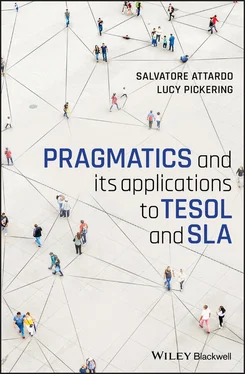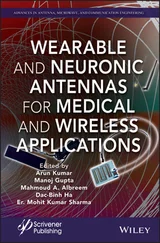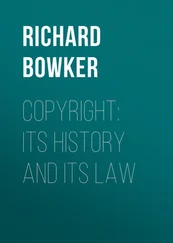Grammaticalization and Pragmatics
Some authors have tried to distinguish between a linguistic pragmatics and a general pragmatics. The idea is that some pragmatic processes are needed to process linguistic components, for example, in the use of T/V pronouns 6in the Romance languages. If a student chooses to address a professor by the T pronoun, it is the equivalent of addressing him/her by their first name (Lucy), rather than by their title and last name (e.g., Dr. Pickering). The choice is eminently pragmatic (How familiar/informal does the student want to be? How much respect and distance does he/she want to show?) and it is encoded directly in the grammar of the language (i.e., grammaticalized).
Other pragmatic phenomena are essentially not linguistic in nature: if one is asked if Mary and Bob are having an affair, and one smiles knowingly, a pragmatic inference can be drawn that it is the case that Bob and Mary are having an affair, that the speaker knows this, and that to some extent they are not that bothered by it. None of these inferential processes is (directly) linguistic.
Another distinction that can be drawn is between grammar and pragmatics. Since grammar is a code, many scholars (e.g., Ariel, 2008) propose to use that as the boundary: in a rough form, the distinction is illustrated in Table 1.1.
Table 1.1The grammar/pragmatics boundary, according to Ariel, 2008.
| Grammar |
Code |
Conventional |
| Pragmatics |
Inferences (nonlogical) |
Not based on convention |
The obvious problem is that pragmatics and grammar are in a dynamic relation: what used to be pragmatic inferences become part of the set of conventions of the language and eventually become grammaticalized (i.e., it becomes part of the grammatical system). Consider an example:
(4) Can you pass the salt?
Literally this means “are you capable of passing the salt?” but most speakers of English are surprised by this because the expression has become conventional for “please pass the salt.” When a convention becomes so engrained that speakers are no longer aware of its origin, as well as usually phonetically reduced (i.e., loses some of its sounds), it becomes grammaticalized. For example, Old English “willan” (to intend) became “will” (as in “I will go”) indicating intention, and eventually it was reduced to “I’ll go” indicating future tense. We will return to the topic of the semantics/pragmatics boundary in Section 4.1.7.
It is possible that the reason it is so hard to find a watertight boundary between semantics and pragmatics is that one just does not exist and that there is a continuum of meaning, some more conventional, some less, some grammaticalized, and some not. Ultimately, from the point of view of teaching, the lack of a clear boundary between semantics and pragmatics may be moot: meaning, whether it is semantic or pragmatic, is meaning, and speakers convey it, regardless of the definitions.
However, it is important to understand these distinctions in order to be able to read the literature in the field: what are we to make of the insistence or perhaps obsession in the field with finding a boundary, especially in relation to the idea of modularity? Historically, the idea of modularity was imported from psychology. Likewise, the idea of proposition and the whole idea of truth-functional semantics was imported wholesale from philosophy. The idea that utterances express a proposition that is then “modified” underlies speech act theory, the cooperative principle, politeness theory, and the entire fields of stance and metapragmatics, to use one example. These ideas are now so entrenched into pragmatics that it is impossible to even talk intelligently about the subject without assuming knowledge of these subjects.
Moreover, increasingly pragmatics is moving toward a more experimental paradigm, in which researchers perform psycholinguistic experiments and draw conclusions from them about the nature of pragmatics. In those types of experiments, which usually involve reaction times or the tracking of the gaze of the subjects as a proxy of their attention, whether semantics is modular is a crucial question, because reaction times will vary depending on that (so far the evidence points to the fact that lexical processing happens in a non-modular fashion).
1.2 A Real-Life Application
You might say, all this is fine and dandy, but I am a teacher, what do I care about various theories of meaning? We are glad you asked!
Consider the following two arguments: the main purpose of language is to convey information. Information is meaning. Knowing about meaning is a little like knowing about the engine in your car. Pickering’s attitude toward her vehicles is roughly that: what do I care about carburetors and gaskets? All I want is to drive to school to teach my students. When her car caught on fire at an intersection, she realized that perhaps oil changes might have been a good idea (true story, by the way). As a result, she now gets her oil changed and car checked regularly. Knowing about how meaning works, for an English teacher, is like changing the oil in your car: it is not the primary purpose of the activity, and most of the time you can ignore it, but when things go wrong, you end up stranded at an intersection in East Texas, with flames coming out of your hood.
So, when do things go wrong with meaning? Plenty of times, as it turns out. Misunderstandings and miscommunications happen all the time. Consider the following example from an advice columnist:
(5) Annette Richmond (Forbes Magazine, 2013)
One way to avoid misunderstandings with the boss is to make sure you clarify what you think that she means. For instance you might want to say “I understand you want frequent updates. How often does that mean ? Is it once a week or every few days?” If you’re the boss try to be specific. Then everyone will have the same expectations. (our emphasis, SA/LP)
It’s easy to imagine a situation in which, two months later, the boss is upset because the employee only provided updates every other week, whereas the boss would have wanted weekly updates. Here, remembering that “frequent” is another scalar adjective along a continuum with “rare,” “infrequent,” “occasional,” “frequent,” and “daily” or “constant” might have helped.
Even more frequently, when two interlocutors do not share the same context, background information, or presuppositions, serious communication problems may occur. For example, consider the following situation, discussed in Gumperz (1982). At a British airport, a group of workers (primarily male and British) was found to have a conflictual relationship with the servers of the cafeteria, who were primarily female and East Indian. The men perceived the cafeteria ladies as rude and aggressive, whereas they perceived the men as unreasonable. It turns out that in Indian English the tone distinction between ||  gravy || vs. ||
gravy || vs. ||  gravy || does not exist and so the women were saying ||
gravy || does not exist and so the women were saying ||  gravy || (meaning, would you like gravy?) but the men would have expected ||
gravy || (meaning, would you like gravy?) but the men would have expected ||  gravy || and so perceived ||
gravy || and so perceived ||  gravy || as rude (roughly meaning, it’s gravy, take it or leave it). See also Gumperz (1982, p. 173; Pickering, 2018).
gravy || as rude (roughly meaning, it’s gravy, take it or leave it). See also Gumperz (1982, p. 173; Pickering, 2018).
Читать дальше

 gravy || vs. ||
gravy || vs. ||  gravy || does not exist and so the women were saying ||
gravy || does not exist and so the women were saying || 










